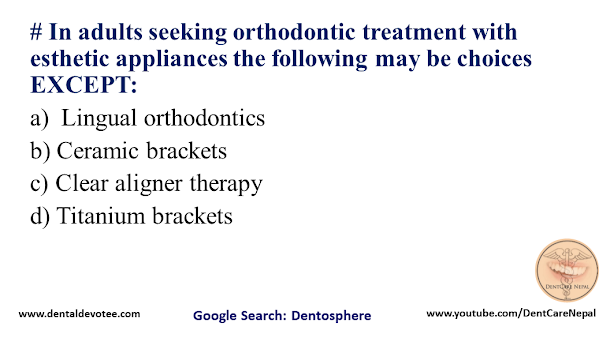# In adults seeking orthodontic treatment with esthetic appliances the following may be choices EXCEPT:
a) Lingual orthodontics
b) Ceramic brackets
c) Clear aligner therapy
d) Titanium brackets
The correct answer is D. Titanium brackets.
All other options are considered esthetic orthodontic appliances because they are either not visible or highly perceptible. Titanium brackets display metal and are not esthetic. Clear aligner therapy can be used for minor orthodontic corrections and can be preferred by patients due to esthetics and ease of use.







